Rough Guides recently named Wellington one of its must visit cities in 2023. There are so many things to see and do in Wellington and is ideal for a mini break.
My wife and I visited last weekend for two days after attending a wedding in nearby Martinborough. Here are some of the highlights of our weekend in Wellington.
As a visitor to New Zealand’s capital, Wellington, you can expect to find a vibrant and culturally rich city.
There are many things to see and do in Wellington, including visiting museums, art galleries, and historic sites. It’s also worth exploring the natural beauty of the surrounding hills and coastline and sampling the local food and drink.
Some popular attractions include Te Papa (the national museum), Wētā Workshop, and the cable car. Additionally, Wellington is known for its lively arts and music scene, with many festivals and events taking place throughout the year.
3 Popular Things to See and Do in Wellington
#1. Wellington Cable Car
If you’re planning a visit to Wellington, be sure to take a ride on its cable car. Wellington’s cable car is a popular tourist attraction that people of all ages will enjoy. It’s a unique mode of transportation that offers excellent panoramic views of the city and the surrounding hills.
The funicular railway runs between Lambton Quay and Kelburn, a suburb located on the top of a hill. A funicular railway operates by using a cable system to pull a car on a railway track up a steep slope.

The cable car has operated since 1902. It’s undergone several renovations and upgrades over the years to ensure the safety and comfort of its passengers.
The cable car is also a convenient way to get to the top of the hill. There, visitors can explore the Botanic Garden and the Carter Observatory.
The cable car journey begins at the Lambton Quay terminus, where passengers can purchase their tickets and board the cable car. It’s made up of two cars that are connected by a cable and run on a track that’s carved into the hillside.
The cable car is powered by an electric motor that is located at the top of the hill. The cars are pulled up the hill by the cable and slowed down by a braking system that is also located at the top of the hill.
The cable car journey takes about 5 minutes and covers approximately 600 metres. The cable cars travel at approximately 10 km/h and can carry up to 80 passengers at a time.
As the cable car ascends the hill, passengers enjoy the views of the city and surrounding hills. The cable car passes through two tunnels that’s built into the hillside and emerges at the top of the hill.
At the top of the hill, passengers can explore the Botanic Garden and the Carter Observatory. The Botanic Garden is a beautiful garden that features a wide variety of plants and flowers. It’s a great place to relax and enjoy Wellington’s natural beauty.
The Carter Observatory is an astronomical observatory that offers visitors a chance to learn more about the stars and planets. The observatory has several telescopes to view the night sky.
Location: 280 Lambton Quay, Wellington Central, Wellington 6011
Opening Hours: Times vary between 07:30 to 20:00 (closed on Christmas Day)
Ticket Prices: Adult Return $11:00 / Child Return ($5.50)
Website: http://www.wellingtoncablecar.co.nz
#2. Te Papa
Te Papa Tongarewa, commonly known as Te Papa, is New Zealand’s national museum. The museum’s name “Te Papa Tongarewa” translates to “the place of treasures of this land” in Māori.
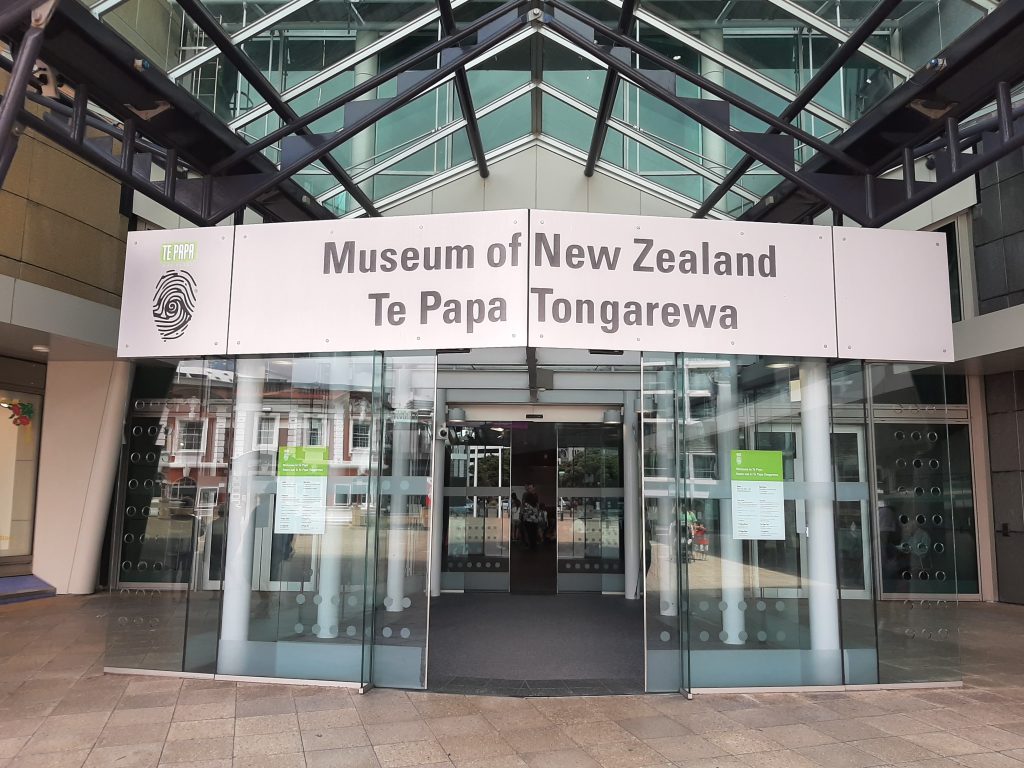
The museum features extensive art collections, history, natural history, and interactive and special exhibitions that change regularly.
Te Papa’s main focus is on New Zealand’s people, culture, and natural environment. It particularly spotlights the country’s indigenous Māori culture.
One of Te Papa’s more popular exhibits is the “Colonial NZ” exhibit. It traces the country’s history from the first Polynesian settlers’ arrival to the arrival of Europeans.
The exhibit features a variety of artifacts, including weapons, clothing, and tools used by the Māori people. Paintings and photographs from the colonial period are also displayed.
Another popular exhibit is the “Nature” exhibit and explores New Zealand’s natural history, including its unique flora and fauna.
The exhibit features numerous specimens, including native birds, fish, and reptiles. Its interactive displays allow visitors to learn more about New Zealand’s natural environment.
Te Papa also features special exhibitions that change regularly. They can cover a wide range of topics, from contemporary art to historical events. They are often accompanied by lectures, workshops, and other educational programs.

Te Papa has a strong emphasis on education and offers a variety of educational programs for school groups, families, and adults. Programs include guided tours, hands-on workshops, and interactive activities designed to engage visitors of all ages and backgrounds.
Facilities
Te Papa is also home to a variety of other amenities, including a gift shop, a café, and a research library. The museum is fully accessible to visitors with disabilities. Ramps, elevators, and other accessibility feature throughout the building.
Overall, Te Papa Tongarewa is a must-see destination for visitors to Wellington. It offers a wealth of information and interactive experiences on the art, culture, and history of New Zealand. It’s a great place to learn about the country’s past, present, and future, and to explore the rich heritage of the Māori people.
Location: 55 Cable Street, Te Aro, Wellington 6011
Opening Hours: 10:00 to 18:00 (closed on Christmas Day)
Ticket Prices: Free entry. Charges apply to some short-term exhibitions and activities)
Website: https://www.tepapa.govt.nz
#3. Wellington Wētā Workshop
Origins
Sir Peter Jackson, Richard Taylor, and Tania Rodger created Wellington Wētā Workshop in 1987. It has now become a world-renowned special effects and prop design studio.
The company has been instrumental in creating some of the most iconic and memorable creatures and props in film history. From the Lord of the Rings trilogy to the Hobbit films, Wētā Workshop has played a crucial role in bringing J.R.R. Tolkien’s fantasy world to life on the big screen.
The company’s origins can be traced back to the early 1980s.
Sir Peter Jackson was working on his first full-length feature film, Bad Taste. Jackson had a passion for filmmaking and special effects. He teamed up with Richard Taylor and Tania Rodger to create the special effects and props for the film.
The trio quickly realised they had a special talent for creating realistic and believable creatures and props. They decided to start a company to pursue their passion.
However, it wasn’t until the late 1990s when the company really began to make a name for itself.

The Evolution of Lord of the Rings
In 1999, Sir Peter Jackson approached Wētā Workshop to create the special effects and props for his upcoming Lord of the Rings trilogy.
The Lord of the Rings trilogy was a massive undertaking for Wētā Workshop. The films required hundreds of creatures, characters, and props to be created.
The company worked tirelessly to bring J.R.R. Tolkien’s fantasy world to life, and their efforts paid off. The films were a huge success and Wētā Workshop’s work was widely praised for its realism and attention to detail.
One of the most iconic creatures from the Lord of the Rings trilogy was the Nazgul, also known as the Ringwraiths. These ghostly figures were created using a combination of practical effects and CGI. Wētā Workshop created the costumes and prosthetic makeup for the actors playing the Nazgul.
The company created the giant spider Shelob, which was a mixture of practical effects and CGI.
The Lord of the Rings trilogy required the creation of a wide variety of weapons, armour, and other props. Wētā Workshop’s team of designers and craftsmen worked to create realistic and detailed replicas of the weapons and armour used in the films.
The company also created a wide variety of other props, including sets, costumes, and special effects.
Wētā Workshop Springs Into Action
Wētā Workshop’s work on the Lord of the Rings trilogy was a turning point for the company. It went on to work on a number of other high-profile film projects.
In 2005, Wētā Workshop was once again called upon by Sir Peter Jackson to work on the Hobbit films. The Hobbit films required the creation of even more creatures and props than the Lord of the Rings trilogy, and Wētā Workshop rose to the challenge.
One of the most iconic creatures from the Hobbit films was the dragon Smaug, which was created using a combination of practical effects and CGI.
Wētā Workshop’s designers and craftsmen created a full-scale animatronic dragon, as well as numerous other props and special effects.
Wētā Workshop’s work on the Hobbit films was once again widely praised, and the company has since gone on to work on a number of other high-profile film projects.
Some of the company’s most recent projects include the films Mad Max: Fury Road, Avengers: Age of Ultron, and Ghost in the Shell.
Location: 1 Weka Street, Miramar, Wellington 6022
Opening Hours: 09:30 to 17:00 (closed on Christmas Day)
Ticket Prices: Wētā Workshop Experience – Adult $50:00 / Child (5-14 years) $5.50
Website: https://www.Wētāworkshop.com
When to Go to Wellington
The best time to visit Wellington is December to February when the weather is warm and sunny. These months are also the peak tourist season, so it’s best to book accommodation and plan your activities well in advance.
Wellington is a great destination year-round and offers many different experiences depending on the season. Spring (September-November) is a great time to see the city’s gardens and parks in bloom, while autumn (March-May) is perfect for experiencing the vibrant fall foliage.
How to Get Around Wellington
There are several ways to get around Wellington, including:
- Public transport: The city has a well-connected bus system, with frequent services running throughout the day. The Metlink bus service also connects Wellington to the surrounding suburbs.
- Taxis and ride-sharing services: Taxis and ride-sharing services like Uber are available in Wellington, making it easy to get around the city.
- Bicycling: Wellington has a network of dedicated bike lanes and paths, making it a great city for cycling. There are also bike rental options available.
- Walking: Wellington is a compact city, and many attractions and landmarks can be easily reached on foot.
- Driving: If you prefer to drive, there are plenty of parking options available in Wellington. Traffic can be heavy during peak hours, so plan your route accordingly.
- Ferry: There is a ferry service to the nearby islands of Matiu/Somes Island and Makaro/Ward Island from Queen’s Wharf.
For more things to see and do in Wellington, visit www.wellingtonnz.com
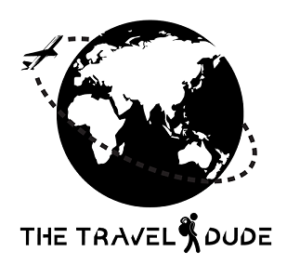
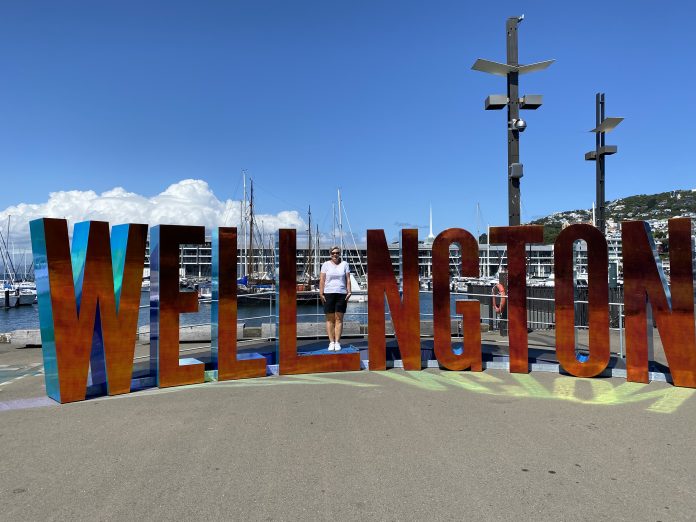
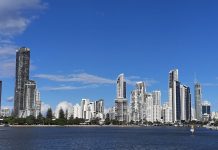
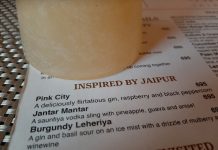
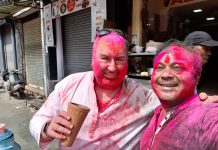










Wellington’s Te Papa is amazing and it’s free! You’d normally pay a huge entry fee to enter a national museum of this quality. I really enjoyed the Gallipoli exhibition which is one of the best I have seen. If you’ve been to several museums around the world, like I have, many have nothing unique to see. The Gallipoi section is unique. It’s easy to spend a few hours there.
I love “The Lord of the Rings” films so I already know what things I want to see and do in Wellington—visit the Weta Workshop and see if I can get a job there. Ha ha. That’s reason enough to go to Wellington. I think I’d like the cable car too.
People always tell me they want to go to Australia for their dream trip. I used to think the same but once I saw “The Lord of the Rings,” I knew I had to go to New Zealand. Not because of the movies (although they’re entertaining) but because New Zealand is so gorgeous. As you point out, there are so many things to see and do in Wellington alone so I can just picture what the rest of the nation is like.
When I saw this I thought Wellington was in the UK. I always enjoy reading a person’s take and things to see and things to do whether it’s Wellington, London, or New York. One of my particular favorites is visiting a nation’s art museums to get a taste of its culture. That’s why I’m happy you mentioned the Te Papa Tongarewa Museum. I’m particularly fascinated by New Zealand’s indigenous culture so this looks like I’ll enjoy visiting it.